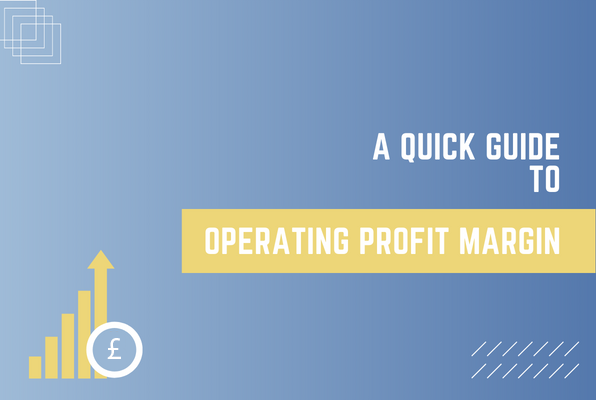- 01253 731791
- 9AM - 5PM Mon - Fri
- Bank House, 9 Dicconson Terrace, Lytham St Annes, FY8 5JY
When running a business, you need to keep a close eye on profits – but profit isn’t a one-size-fits-all term. There are several different profit margins you need to know about, including operating profit margin. But what is your operating profit margin, and how does it differ from gross and net profit?
What is an Operating Profit Margin?
Your operating profit margin is a measure of your business’s profitability, generated from its core business operations, so trading income less cost of goods sold (COGS) and operating expenses.
It differs from your gross profit margin because it includes all operating expenses associated with the business, such as rent, utilities, indirect salaries, depreciation of assets etc.
Net profit, on the other hand, is what’s left of your profit after you’ve accounted for all income and all expenses, not just operational and even including taxes.
Operating profit is simply working out how much your business is making from its core business operations only.
It’s important to know your operating profit margin because it’s a good indication of how efficient your business is. A high margin means you’re generating a lot of profit from your operations and your business is running smoothly. A low margin could mean you’re not selling enough or that your operating expenses are too high.
How to Calculate Operating Profit Margin
The first step in working out your operating profit margin is to calculate your operating profit.
To do this, you need to know your business’s total trading income and cost of sales, as well as its operating expenses.
Operating expenses include things like rent, wages, utilities and insurance.
Once you have this information, you can calculate your operating profit by deducting your cost of sales and operating expenses from your income.
For example, let’s say your business had operational income of £100,000 last year. Your cost of goods sold was £50,000 and operating expenses were £30,000. This would give you an operating profit of £20,000.
Next, to calculate your margin, you need to divide your operating profit by your operating income and multiply by 100. In this example, your operating profit margin would be 20%.
In summary, the formula for working out your operating margin is:
Operating Profit ÷ Operating Income x 100 = Operating Profit Margin %
Comparisons
It can be very helpful to compare your operating profit margin against your gross and net profit margins.
Your operating margin will usually be lower than your gross profit margin because it doesn’t include other forms of income, such as interest or investments.
However, it should be higher than your net profit margin because it doesn’t take into account all expenses, including taxes.
If your operating margin is lower than both your gross and net margins, it could be a sign that your business is inefficient or that your operating expenses are too high.
You should also compare your operating profit margin year-on-year because a decline could indicate that your business is becoming less profitable.
What Causes Operating Profit Margin to Increase?
There are a few different things that can cause your operating profit margin to increase.
If your business’s revenue increases but the cost of sales and operating expenses stay the same, then your margin will increase.
You can also boost your margin by reducing your cost of sales or operating expenses. For example, if you negotiate better terms with suppliers or find ways to reduce your utility bills, your margin will increase.
What Causes Operating Profit Margin to Decrease?
If your business’s revenue decreases but cost of sales and operating expenses stay the same, then your margin will fall.
However, if you have to pay more for raw materials or your rent goes up whilst your revenue remains the same, your margin will decrease.
Final Thoughts
It’s important to keep track of all your business’s financial metrics, including operating profit margin.
By understanding your operating profit margin, you can get a good indication of how efficient and profitable your business is. You can also use it to compare your performance against other businesses in your industry.
Operating profit margins vary depending on the industry you’re in. Some industries are naturally more profitable than others, so compare your margin to businesses in the same sector to get a more accurate idea of how you’re faring.


